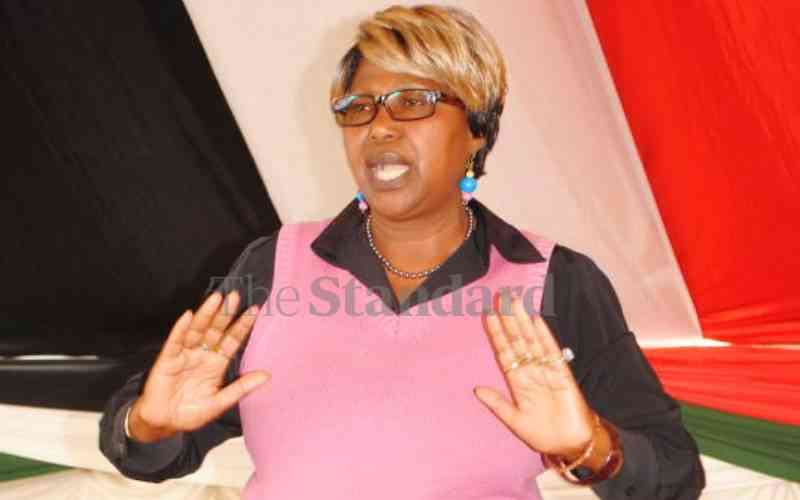By Kiundu Waweru
On Saturday, December 29, revellers swarmed La Belle Inn in Naivasha, in a celebration of 90 years of Tusker Beer. As they gaily danced to the smooth tunes of Sound Afrique Band, they seemed oblivious of the historical significance of the venue, the beer and our country.
Well, Kanda King, the ‘boneless’ dancer and his Sound Afrique Band worked the crowd to a sweat, as they swallowed copious amounts of the tropical equatorial barley brew, courtesy of the ‘lunatic express’.
It was not until 1920 that Kenya got its name. Only about 40 years earlier, the country was a mass of rich land, inhabited by a people who lived in harmony with each other and the environment.
It’s an easy guess that no one in this land had heard of Germany where an onset of great changes in the African continent began.
In 1886, the Great Britain, France and Germany met at a conference in Berlin.
Slave trade
The agenda was to end slave trade in Africa by opening up and developing the East African hinterland.
The first action plan was to make the lands accessible through construction of railway lines. This seemed fair enough but it resulted to what would be known as the ‘Scramble for Africa.’
And the River Nile, with its source in Lake Victoria was the gem. Britain had taken over Egypt, with it the Suez Canal, which got its waters from the Nile.
Uganda, then a British Protectorate had more defined structure due to its Kingdom and Kenya then known as British East Africa Protectorate was seen as a means to an end; an access route to Uganda protectorate which was an impossible territory to administer owing to its landlocked nature.
This heralded the construction of the Uganda Railway in 1896, which would begin from Mombasa to Lake Victoria.
It was a herculean task eliciting a famous phrase by one of the sceptical British Parliamentarians, Henry Labouchere, in a satirical poem referring the railway as the ‘lunatic express’.
Lose of men
The Chief Engineer, Mr George Whitehouse did not relent. He lost his men, including the African and Indian constructors to diseases and the infamous lions, the Man Eaters of Tsavo.
Stay informed. Subscribe to our newsletter
In 1899, the ‘lunatic’ line reached a swampy area, a place of cool waters, Uaso-en-airobi.
Whitehouse set camp as he contemplated the difficult terrain inland through Rift Valley.
According to literature at the Nairobi Railway Museum, Whitehouse built a depot, which is today the Nairobi Railway Station.
A new chapter of the ‘protectorate’ was in the offing. Indeed, whenever the railway engineers came to an open, habitable land they built Railway Stations.
Later in these camps, the industrious Indians who were constructing the railways would build Dukawalas. Thus Kenyan towns were born including Naivasha.
The Railway line reached Kisumu, then Port Florence in 1901.
The East African Protectorate had opened up and the first white people discovered the agricultural potential of this land.
Settlers started swarming and scrambling for land in the White Highlands.
Name ‘Kenya’
The protectorate would get its name, Kenya in 1920.
Parts of history say it was coined from the Kamba language pronunciation of Mt Kenya’s traditional name, Kirinyaga as Kinyaa.
By 1922, the Railway towns were slowly growing and Naivasha, part of the Happy Valley saw the white settlers set homes, drinking holes and golf clubs. Around the same time, The Bell Inn was built in Naivasha, opposite the Railway Station.
“The Bell Inn was the first bar in Naivasha and it has been popular since,” says Mark Kariuki, who is now the proprietor of the popular joint renamed La Belle, the beautiful Inn.
“The first owners were Europeans, then Indians and Africans. In 1984, it was bought by a French lady Janine Singer who renamed it ‘La Belle’. Kariuki, a trained hotelier would acquire it in 1993.
For 90 years, La Belle has served as the favourite stop over and gateway to Nyanza and Western provinces to the weary travellers.
Top on the menu of the travellers, mostly tourists are the beer that stands tall as a Kenyan brand, Tusker Lager.
And well, Tusker is the oldest and most famous beer in East Africa. According to Patrick Gathara, the East African Breweries Limited National Brand Activations Manager.
Tusker was founded in 1922 by two brothers Charles and George Hurst. The beer was named Tusker after George Hurst was mauled by an elephant in 1923, effectively making the Lager synonymous with Safari, tourism, Kenyan top-dollar earner.
La Belle has since seen healthy competition arise in Naivasha including by the lake. It’s to this shared background that EABL chose the venue for the birthday bash.
 The Standard Group Plc is a
multi-media organization with investments in media platforms spanning newspaper
print operations, television, radio broadcasting, digital and online services. The
Standard Group is recognized as a leading multi-media house in Kenya with a key
influence in matters of national and international interest.
The Standard Group Plc is a
multi-media organization with investments in media platforms spanning newspaper
print operations, television, radio broadcasting, digital and online services. The
Standard Group is recognized as a leading multi-media house in Kenya with a key
influence in matters of national and international interest.
 The Standard Group Plc is a
multi-media organization with investments in media platforms spanning newspaper
print operations, television, radio broadcasting, digital and online services. The
Standard Group is recognized as a leading multi-media house in Kenya with a key
influence in matters of national and international interest.
The Standard Group Plc is a
multi-media organization with investments in media platforms spanning newspaper
print operations, television, radio broadcasting, digital and online services. The
Standard Group is recognized as a leading multi-media house in Kenya with a key
influence in matters of national and international interest.








